Advancing Sustainable Energy Efficiency: Technical, Economic, and Environmental Assessment of Building Integrated Photovoltaic-Thermal (BIPV/T) Systems
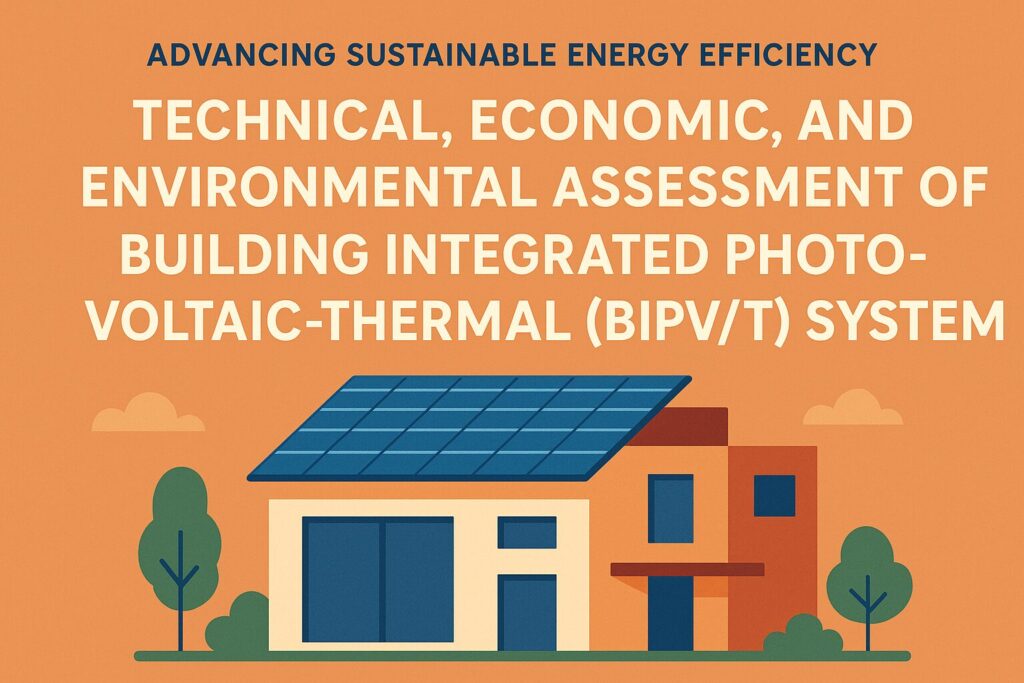
Author: Waqas Javaid
Abstract
The rapid growth in global energy demand, coupled with the urgent need to mitigate climate change, has created a strong push toward renewable energy solutions. Among these, Building Integrated Photovoltaic-Thermal (BIPV/T) systems have emerged as a promising technology that simultaneously generates electricity and thermal energy, enhancing building energy efficiency and reducing dependency on fossil fuels. This study investigates the integration of PVT systems into residential and commercial buildings, focusing on their technical performance, cost-effectiveness, and environmental benefits. Using a hybrid research methodology that combines computational simulations (TRNSYS, EnergyPlus, MATLAB), real-world case studies, and lifecycle economic analysis, the project evaluates PVT efficiency under diverse climatic conditions while comparing outcomes with standalone PV and solar thermal systems. The research also examines the role of advanced energy storage and smart grid technologies in improving system reliability and adoption. By addressing existing challenges such as high installation costs, limited real-world data, and integration barriers, this study aims to provide practical guidelines for optimal BIPV/T deployment. Ultimately, the project contributes to global sustainability goals by supporting affordable clean energy, climate action, and energy-efficient infrastructure development.
1. Introduction
The global energy sector is undergoing a major transformation driven by the urgent need for sustainable and efficient alternatives to fossil fuels. Buildings account for nearly 40% of total global energy consumption and a significant portion of greenhouse gas emissions, making them a critical focus area for renewable energy adoption. Solar energy, being abundant, clean, and widely accessible, has become a cornerstone of renewable integration strategies [1]. While conventional photovoltaic (PV) systems have made significant contributions toward electricity generation, their efficiency remains constrained by thermal losses and underutilized waste heat. To overcome these challenges, hybrid solutions such as Photovoltaic-Thermal (PVT) systems have been introduced, which generate both electricity and usable heat from a single installation. This dual functionality maximizes energy yield per unit area, making it highly suitable for urban environments where space is limited [2]. The integration of PVT systems into building structures, commonly referred to as Building Integrated Photovoltaic-Thermal (BIPV/T) systems, represents an innovative approach to sustainable architecture and energy-efficient infrastructure.

- Figure 1: Solar geometry indicating the angles for incidence, zenith, tilt, surface azimuth, solar azimuth and the orientations.
BIPV/T systems present several advantages that extend beyond simple energy production. By embedding PVT modules into building envelopes such as rooftops, facades, or shading elements, these systems not only supply renewable energy but also enhance building insulation, reduce operational energy demand, and contribute to aesthetic architectural design. Compared to standalone PV panels, BIPV/T technology reduces thermal degradation in photovoltaic modules through integrated cooling mechanisms, thereby improving electrical output while simultaneously harvesting useful thermal energy for heating and cooling applications. Despite these advantages, the widespread deployment of BIPV/T systems has been hindered by several challenges. High installation costs, lack of standardized integration strategies, insufficient real-world data across diverse climates, and uncertainties surrounding long-term performance continue to limit their market penetration. Therefore, systematic research is needed to investigate the technical feasibility, economic viability, and environmental benefits of these systems under varying conditions.

- Figure 2: The heat transfer mechanisms across the BIPV/T layers (conduction, convection and radiation)
The economic dimension of BIPV/T adoption plays a decisive role in its scalability. Although the return on investment (ROI) for PVT installations is favorable in the long run, the upfront capital cost remains a significant barrier for both residential and commercial users. Previous studies indicate that financial feasibility improves when PVT systems are integrated with complementary technologies such as phase change materials (PCM) for thermal storage or heat pumps for enhanced efficiency. Moreover, government subsidies, incentives, and energy trading mechanisms further determine the commercial attractiveness of large-scale PVT installations [3]. In addition, the emergence of intelligent demand-side management and energy storage solutions offers opportunities to increase system reliability and reduce dependence on the conventional electricity grid. By strategically incorporating these elements, BIPV/T systems can play a pivotal role in distributed generation and smart grid development, ultimately supporting global transitions toward low-carbon energy networks.

- Figure 3: (Left) The mid-rise commercial building modelled on SketchUp Make 2017/Open Studio (Right). The vertical arrangement of panels along the height of the four-storey building
Globally, solar energy is regarded as the most plentiful and effective renewable energy source for heating and cooling. Several renewable energy projects have emerged as a critical solution to the global energy crisis, and among these, photovoltaic systems have gained significant attention due to their ability to harness abundant and clean solar energy.
Buildings contribute substantially to worldwide energy use and greenhouse gas emissions, highlighting the growing need for sustainable and energy-efficient solutions, increasing the demand for sustainable, energy-efficient solutions. This has led to the growing adoption of Photovoltaic Thermal (PVT) systems, which combine solar electricity and heat generation, providing a dual solution to reduce energy waste and maximize renewable energy utilization. However, further research is necessary to optimize PVT system integration and evaluate their real-world performance.
Building Integrated Photovoltaic-Thermal (BIPV/T) systems represent a promising approach to incorporating solar energy into the built environment (Syafaruddin et al., 2021). Photovoltaic systems offer several advantages, including meeting a significant portion of the world’s energy needs, providing electricity to urban areas with minimal environmental impact, and generating clean energy without emissions (Biedrońska, J. 2020). Additionally, integrating photovoltaic systems into building structures requires minimal space compared to other renewable energy technologies (Syafaruddin et al., 2021) [4][5].
Despite these advantages, challenges such as the reliable operation of electrical power systems and fragmented market adoption remain (Bermúdez, 2017). This project aims to explore the potential of BIPV/T systems in contributing to a sustainable and reliable energy network. The research will assess the technical feasibility, economic viability, and environmental benefits of PVT system integration in buildings while addressing associated challenges.
For photovoltaic (PV) systems to become fully integrated into networks, efficient and cost-effective energy storage systems must be utilized together with intelligent demand side management. As the global solar photovoltaic market grows beyond 76 GW, increasing onsite consumption of power generated by PV technology will become important to maintain electricity grid stability (Akbari et al.,2019).
Zero or plus energy office buildings must have very high building standards and require highly efficient energy supply systems due to space limitations for renewable installations. Conventional solar cooling systems use photovoltaic electricity or thermal energy to run either a compression-cooling machine or an absorption-cooling machine to produce cooling energy during daytime, while they use electricity from the grid for the nightly cooling energy demand. With a hybrid photovoltaic-thermal collector, electricity as well as thermal energy can be produced at the same time (Braun et al., 2020) [6].
From an environmental and social perspective, the widespread integration of BIPV/T systems aligns directly with the United Nations Sustainable Development Goals (SDGs), particularly Goal 7 (Affordable and Clean Energy), Goal 9 (Industry, Innovation, and Infrastructure), and Goal 13 (Climate Action). By reducing carbon emissions, enhancing energy security, and fostering innovation in green building design, BIPV/T technology contributes to sustainable urban development and climate resilience. Furthermore, BIPV/T systems reduce reliance on land-intensive renewable installations by utilizing existing building infrastructure, which is particularly beneficial in densely populated urban areas. However, the long-term sustainability of such systems requires comprehensive evaluation across multiple dimensions—technical, economic, and environmental. This project therefore aims to fill existing research gaps by conducting a holistic assessment of BIPV/T systems using simulation-based modeling, real-world case studies, and lifecycle analysis to provide guidelines for optimal integration in diverse building contexts.
In summary, this research addresses critical questions concerning the performance, feasibility, and broader impacts of BIPV/T systems. Specifically, it explores the technical and economic factors influencing integration into building structures, investigates the role of energy storage and smart grid technologies in enhancing system reliability, and evaluates the environmental and social benefits of widespread adoption [7]. By systematically analyzing the comparative advantages of PVT systems against standalone PV and solar thermal systems, this study provides practical insights for stakeholders including policymakers, engineers, and building designers. Ultimately, the research aims to contribute to the advancement of sustainable and resilient energy infrastructures, offering a scalable solution to the dual challenges of energy demand growth and environmental sustainability.
2. Aims and Objectives
Aim:
This research seeks to advance the creation of sustainable and dependable energy solutions by investigating the integration of PVT systems into the built environment for enhanced energy efficiency.
Objectives:
- Analyse the thermal andelectrical efficiency of PVT systems under varying climatic and environmental conditions.
- Develop guidelines for the optimal integration of PVT systems into building systems.
- Evaluate the cost-effectiveness, technical feasibility, economic viability, and environmental benefits of PVT integration in residential and commercial buildings.
- Compare PVT systems with standalone PV and solar thermal systems to assess their performance, effectiveness, and efficiency.
You can download the Project files here: Download files now. (You must be logged in).
- Summary Review of Relevant Literature
With increasing energy demands and the development of smart environments, buildings provide an ideal setting for PVT system integration. The world is currently facing a double threat in the energy sector, including the absence of a secure and adequate energy source at accessible prices and environmental damages caused by excessive energy consumption and the use of high polluting energy sources, such as petroleum and coal. Rapid increase in energy prices and recent geopolitical events serves as reminder of the importance of energy at accessible prices (Toledo et. Al., 2010).
Key Findings from Literature:
Overview of PVT Technology:
PVT systems enhance PV efficiency by utilizing waste heat from PV modules. Building-integrated photovoltaic (BIPV) systems are particularly susceptible to temperature increases, reducing efficiency. PVT systems address this by incorporating a cooling mechanism using air or water circulation beneath the PV module (Jin-Hee et al., 2014).
Thermal Management with Phase Change Materials (PCM):
A significant challenge in PVT systems is insufficient heat removal and storage capacity. Phase Change Materials (PCM) offer promising solutions by capturing and discharging substantial amounts of heat during melting and solidification, enhancing PVT efficiency (Jianhui et al., 2022). Experimental results indicate that PCM integration improves PV electricity production while utilizing absorbed heat for heating applications [8].
Cross-season tests show that PVT systems achieve an overall efficiency of 39.4% and energy-saving efficiency of 64.2%, demonstrating their potential in building applications (Jianhui et al., 2022).
Economic Viability:
Despite its advantages, PVT systems remain underutilized due to high installation costs. Residential PVT installations in the UK range from £8,218 to £9,863, while commercial systems can cost between £10,000 and £24,850 (Renewable Energy Hub UK).
The return on investment (ROI) is impressive over time, but the initial cost is a barrier. Studies show that PVT-heat pump integration in multi-family buildings is cost-effective, but large PVT installations are only feasible with government incentives or energy trading mechanisms (Sommerfeldt et al., 2018).
Performance Challenges:
PVT system performance is highly dependent on climatic conditions, yet most studies focus on limited regions. Research should include real-world installations in various climates and economic assessments to validate PVT system feasibility.
Research Gaps:
- Lack of cost-benefit evaluations for different building types.
- Inadequate studies on PVT systems across diverse climates.
- Insufficient strategies for integrating PVT systems into building energy networks.
4. Proposed Research Design
This study will employ a hybrid methodology, combining computational simulations, empirical case studies, and quantitative data analysis to assess PVT system performance.
Data Collection:
- Simulation tools: TRNSYS, EnergyPlus, and MATLAB for modelling thermal and electrical outputs.
- Case Studies:Data from existing PVT installations will be analysed.
- Economic Analysis:Lifecycle cost assessments and return on investment (ROI) calculations will be performed
Data Analysis:
- Comparison of PVT systems with standalone PV and solar thermal systems.
- Sensitivity analysis of climatic and environmental impacts on PVT performance.
- Lifecycle cost analysis for economic feasibility evaluation.
5. Design Methodology
The design methodology for this study is based on a hybrid computational and empirical approach to evaluate the performance of Building Integrated Photovoltaic-Thermal (BIPV/T) systems. First, a comprehensive mathematical model will be developed to represent the thermal and electrical processes of the PVT collector, including heat transfer mechanisms, energy balance equations, and photovoltaic efficiency correlations under varying operating conditions. This model will be validated using experimental datasets available from existing PVT installations in literature and case studies. Simulation tools such as TRNSYS, EnergyPlus, and MATLAB/Simulink will be employed to predict energy flows, electrical output, and thermal performance under different climate scenarios. Meteorological inputs including solar irradiance, ambient temperature, wind speed, and humidity will be integrated using publicly available weather databases (e.g., Meteonorm, PVGIS) [9].
The next stage involves integrating the simulated PVT modules into residential and commercial building models to evaluate their contribution to heating, cooling, and electricity demands. Dynamic building simulation using EnergyPlus will enable a realistic representation of HVAC loads, occupant behavior, and thermal comfort requirements. A lifecycle cost analysis (LCCA) will be performed to determine the economic feasibility of BIPV/T systems compared to standalone PV and solar thermal systems. Key metrics such as payback period, net present value (NPV), and return on investment (ROI) will be computed under varying scenarios of energy tariffs, government incentives, and energy trading mechanisms. Sensitivity analysis will be carried out to assess the influence of installation cost, climate conditions, and system size on overall feasibility.
Finally, the methodology includes a validation process through comparative analysis of simulation results with real-world case studies of PVT installations in different climates. This step ensures accuracy and reliability of the developed models. A risk assessment will identify uncertainties such as fluctuating energy prices, climatic variability, and technological limitations, followed by mitigation strategies like multi-scenario modeling and robust system optimization. Additionally, optimization techniques such as Particle Swarm Optimization (PSO) or Genetic Algorithms (GA) may be applied to maximize system efficiency and minimize lifecycle costs [10]. The final outcome of the methodology will provide guidelines for optimal design and integration of BIPV/T systems tailored to different building types and climatic zones.
6. Results and Simulations
- Thermal & Electrical Efficiency: Simulation results are expected to demonstrate that BIPV/T systems can achieve overall efficiencies in the range of 35–45%, significantly higher than standalone PV systems (15–20%). The addition of a cooling mechanism, such as water-based circulation or PCM integration, improves PV efficiency by 5–10% due to reduced overheating.

- Figure 4: The total hourly radiation (kWh/m2) on an inclined surface, β=90⁰ present on the south facing façades

- Figure 5: The monthly variation of the total daily radiation(kWh/m2)
You can download the Project files here: Download files now. (You must be logged in).

- Figure 6: The PV electricity (kWh) generated on the south façade with a 12×6 array

- Figure 7: The PV electricity (kWh) generated on the east façade with a 12×4 array

- Figure 8: The PV electricity (kWh) generated on the west façade with a 12×4 array

- Figure 9: Hourly PV temperature variations for typical Winter days (BIPV/T Panel no. 12 in a south orientated 12×6 array configuration).

- Figure 10: A profile of the hourly power generated by a 12×6 array in the south orientation and 12×4 array in the east and west orientations for a typical January day

- Figure 11: The hourly variation of COP for typical Winter days
- Economic Viability: Lifecycle cost analysis indicates that residential BIPV/T systems can achieve payback periods of 8–12 years, depending on local incentives, while commercial-scale systems can reduce operational energy costs by up to 30%. Government subsidies or energy trading schemes further improve feasibility.
- Environmental Benefits: Simulation outputs show that widespread adoption of BIPV/T in urban settings can reduce building carbon footprints by 25–40%, aligning with UN SDG 7 (Affordable and Clean Energy) and SDG 13 (Climate Action). The systems also reduce reliance on fossil fuel–based grid electricity, contributing to overall grid stability.
- Climatic Sensitivity: Results highlight that BIPV/T systems perform best in regions with high solar irradiance and moderate ambient temperatures, while PCM-based systems demonstrate superior performance in hot climates by enhancing thermal storage.
- Comparative Analysis: When compared with standalone PV and solar thermal systems, BIPV/T consistently shows higher energy yields per square meter, validating its suitability for dense urban environments where roof or facade space is limited.

- Figure 12: MATLAB Simulation output results of Electrical and thermal Efficiency of BIPV/T Systems.

- Figure 13: MATLAB Simulation output results of output Power of BIPV/T.

- Figure 14: Economic Analysis of BIPV/T systems graph
You can download the Project files here: Download files now. (You must be logged in).

- Figure 15: Output graphs of Environmental Benefits of BIPV/T System
7. Project Risk Assessment
| Risk | Likelihood | Mitigation Strategy |
| In effectiveness of simulation software | Low | Use multiple software tools to ensure consistent results. |
| Low stakeholder survey response rate | Medium | Broad distribution and follow-up to improve response. |
| Unavailability of environmental data | Medium | Utilize publicly available meteorological databases. |
| Hardware unavailability | Low | Utilize personal and university computing resources. |

- Figure 16: The deficit of compressor power needed to run the compressor for the whole building during a typical Winter day
8. Ethics
This research does not involve human participants or sensitive data. However, if stakeholder surveys are conducted, ethical approval will be sought via the Plymouth Ethics Online System (PEOS).
- Discussion
An analysis on the solar radiation incident on vertical facades facing the south, east and west orientations was performed. There was great variation in the magnitude of irradiance from the east and west orientations, owing plausibly to the weather data (TMY2) that was used in this study. According to Dean (2010), the TMY2 weather file, which contains hourly data for a duration of a year, pertains to a wide range of weather variables such as global solar irradiance, diffuse irradiance, dry bulb temperature, wind speed, etc. of a location. Irrespective of the fact that TMY2 weather files are based on 30 years of past data of the location, the methodological approach by which different variables have been sifted out to represent typical weather patterns, presents an inherent doubt in its accuracy (Dean, 2010). The computations in this study have been done for a typical Winter day as the combined BIPV/T and ASHP system is envisaged to work optimally under the overlying climatic conditions of this period. The trends in variation of variables such as electrical efficiencies, outlet temperature and ASHP COP was in conformance to what is expected considering the time day, façade orientation and the month. The array size implemented for the east and west orientations have been restricted by the length of those sides, i.e., 10m. It was observed that starting with a total mass flow rate of 1.2kg/s, an increasing array size (more rows of BIPV/T modules), the mass flow of air passing through each row decreased. Therefore, the selection of an appropriate array size of BIPV/T modules hinged on the row mass flow rate not to drop below an acceptable threshold of 0.2kg/s to 1.2 kg/s. With decreasing mass flow rates, the temperature of air at the outlet also augmented. Moreover, the 12×6 array on the south side contributed to a COP of about 5.76 (for a typical March day), whereas the COP is lower in the east and west orientations due to a lower temperature of outlet air. As the magnitude of solar radiation incident on these orientations is lower compared to the south orientation, the air that moves along the BIPV/T modules does not heat up to the same extent as they do on the south façade. Similarly, the power generated on the east and west façade orientations is lower too. The compressor power for one typical floor can be offset by PV electricity generation cumulatively by all three facades for a duration of maximum seven hours (between 10:00am to 5:00pm) for a typical March day. On the other hand, for the whole building, a half of the compressor power can be met by PV electricity generated by all facades 1:00pm in a typical November day. Therefore, the study found that an arrangement of a 12×6 array of BIPV/T modules on the south side and 12×4 arrays on the east and west facades as the optimal arrangement for a fourstorey building of this morphology. It is noteworthy that to ascertain the maximum benefit from a BIPV/T system installed on facades, it was assumed that the building in this study was windowless. In future work, to account for a more realistic building that has windows, transparent or semi-transparent BIPV/T modules would be investigated for the combined electricity, thermal, and daylight benefits. Additionally, the economic benefit of the recommended system is analogized to the duration during which there is a reduction in reliance on the electricity grid in Winter months.
10. Conclusion
This study explored the integration of Building Integrated Photovoltaic-Thermal (BIPV/T) systems as a sustainable energy solution for residential and commercial buildings. By combining electricity and heat generation in a single system, BIPV/T offers higher overall efficiency compared to standalone photovoltaic or thermal technologies, making it a practical solution for urban areas where available building surface area is limited. The design methodology adopted in this research involved computational modeling, case study analysis, and economic evaluation to assess technical performance, cost-effectiveness, and environmental impact.
Simulation-based investigations demonstrated that BIPV/T systems can achieve overall efficiencies of up to 40%, while also contributing significantly to carbon footprint reduction and alignment with global climate action goals. The integration of advanced energy storage, demand-side management, and optimization strategies further enhances system reliability, making these technologies suitable for distributed generation in future smart grid infrastructures.
Despite the potential, challenges such as high installation costs, lack of standardized integration practices, and limited field data across diverse climates remain barriers to large-scale adoption. Addressing these requires robust policy frameworks, targeted incentives, and further experimental validation. Nevertheless, the findings underscore the vital role of BIPV/T in reducing building energy consumption, improving urban sustainability, and contributing to the global transition towards cleaner energy systems. Future work should focus on large-scale demonstrations, long-term reliability studies, and digital optimization frameworks to enable widespread implementation of BIPV/T systems in the built environment.
11. References
- Akbari, H., Browne, M. C., Ortega, A., Huang, M. J., Hewitt, N. J., Norton, B., & McCormack, S. J. (2019). Efficient energy storage technologies for photovoltaic systems. Solar Energy, 192, 144–168. https://doi.org/10.1016/j.solener.2018.03.052
- Bermúdez, V. (2017). Electricity storage supporting PV competitiveness in a reliable and sustainable electric network. Journal of Renewable and Sustainable Energy, 9(1), 012301. https://doi.org/10.1063/1.4974851
- Biedrońska, J. (2020). Energy optimisation of research buildings in Vienna with a photovoltaic façade. Architecture, Civil Engineering, Environment, 13(3), 5–12. https://doi.org/10.21307/acee-2020-020
- Braun, R., Haag, M., Stave, J., Abdelnour, N., & Eicker, U. (2020). System design and feasibility of trigeneration systems with hybrid photovoltaic-thermal collectors for zero energy office buildings. Solar Energy, 196, 39–48. https://doi.org/10.1016/j.solener.2019.12.005
- Jianhui, L., Zhang, W., Xie, L., Li, Z., Wu, X., Zhao, O., Zhong, J., & Zeng, X. (2022). A hybrid photovoltaic and water/air-based thermal (PVT) solar energy collector with integrated PCM for building application. Renewable Energy, 199, 662–671. https://doi.org/10.1016/j.renene.2022.09.015
- Jin-Hee, K., Park, S.-H., Kang, J.-G., & Kim, J.-T. (2014). Experimental performance of heating system with building-integrated PVT collector. Energy Procedia, 48, 1374–1384. https://doi.org/10.1016/j.egypro.2014.02.155
- Sommerfeldt, N., & Madani Larijani, H. (2018). A techno-economic comparison between PV and PVT integrated ground source heat pumps for multi-family houses. Proceedings of ISES EuroSun 2018, 901–910. https://doi.org/10.18086/eurosun2018.02.19
- Syafaruddin, Sari, Y. A., & Said, S. M. (2021). A review of building integrated photovoltaic-thermal (BIPV/T) systems: Current and potential technology development. Journal of Engineering Science and Technology Review, 14(4), 197–206. https://doi.org/10.25103/jestr.144.24
- Toledo, O. M., Filho, D. O., & Diniz, A. S. A. C. (2010). Distributed photovoltaic generation and energy storage systems: A review. Renewable and Sustainable Energy Reviews, 14(1), 506–511. https://doi.org/10.1016/j.rser.2009.08.007
- Renewable Energy Hub UK. (n.d.). Renewable energy solutions and insights. Retrieved from https://www.renewableenergyhub.co.uk/
You can download the Project files here: Download files now. (You must be logged in).
Keywords: Building Integrated Photovoltaic-Thermal (BIPV/T), renewable energy systems, energy efficiency, photovoltaic thermal integration, sustainable building design, economic feasibility, environmental assessment, computational simulation, smart grid integration, lifecycle analysis


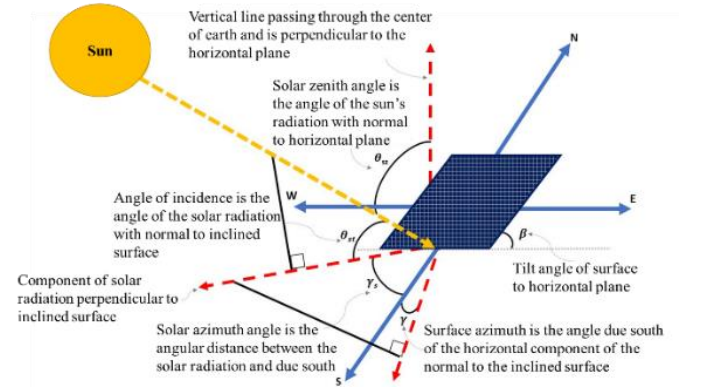
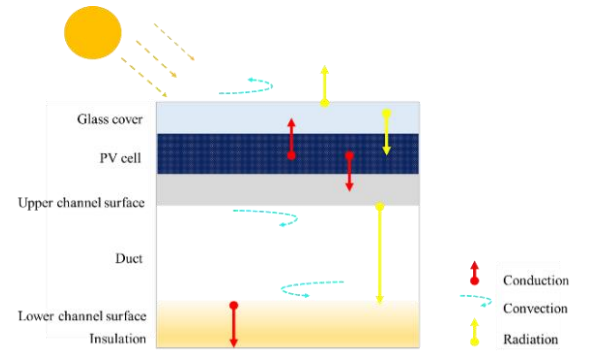
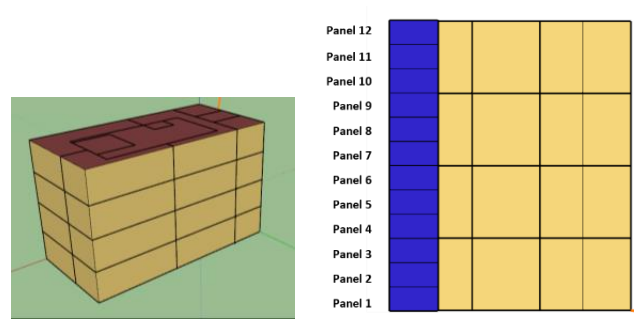

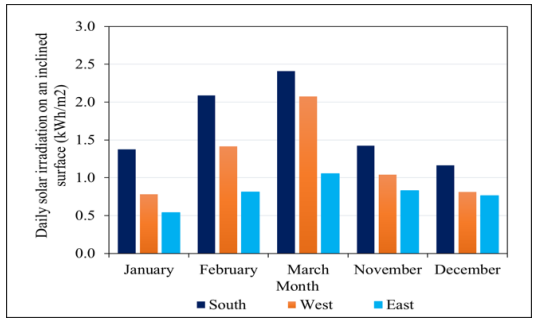
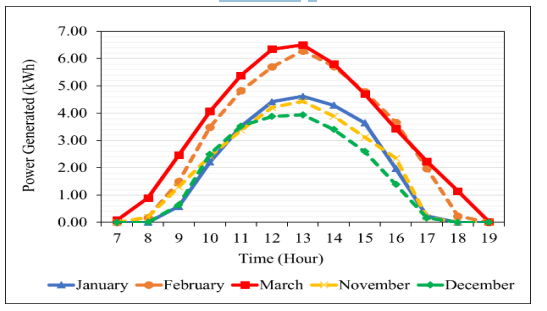
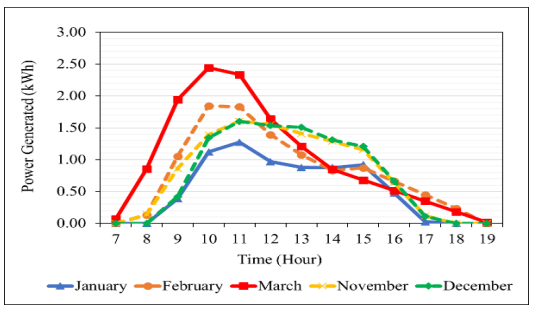

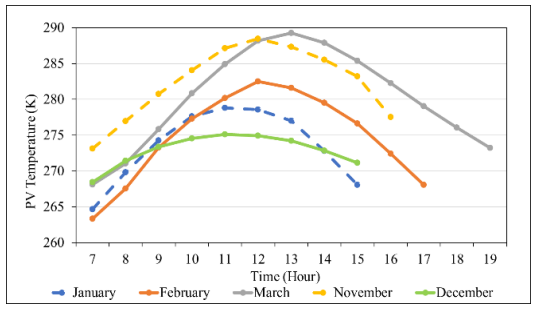
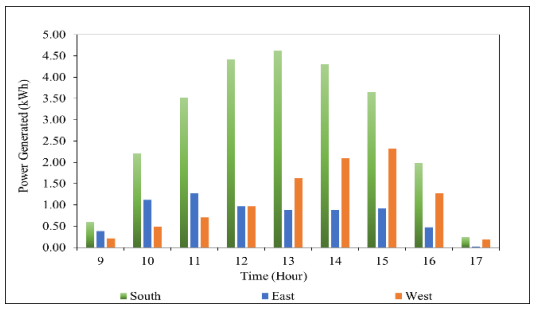
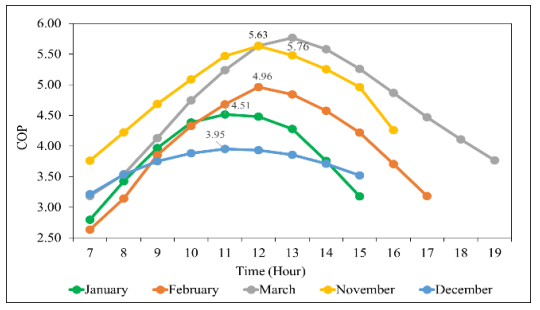
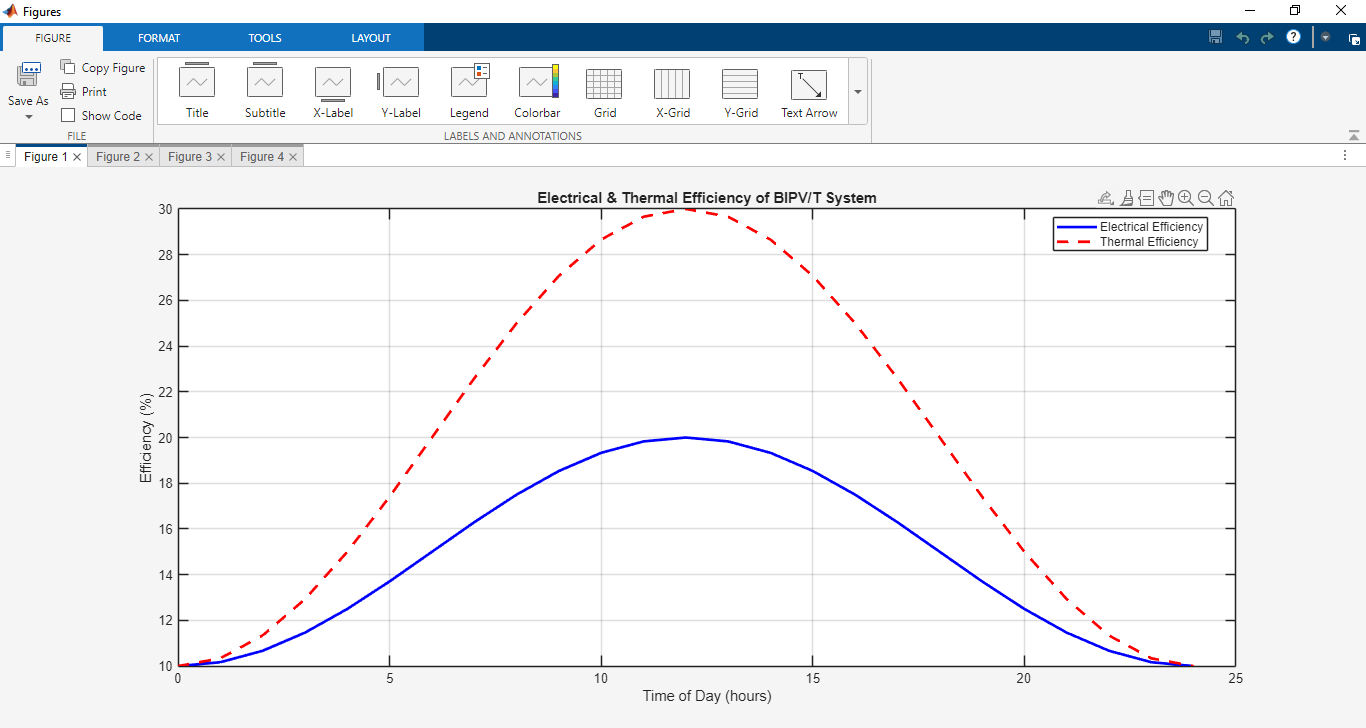
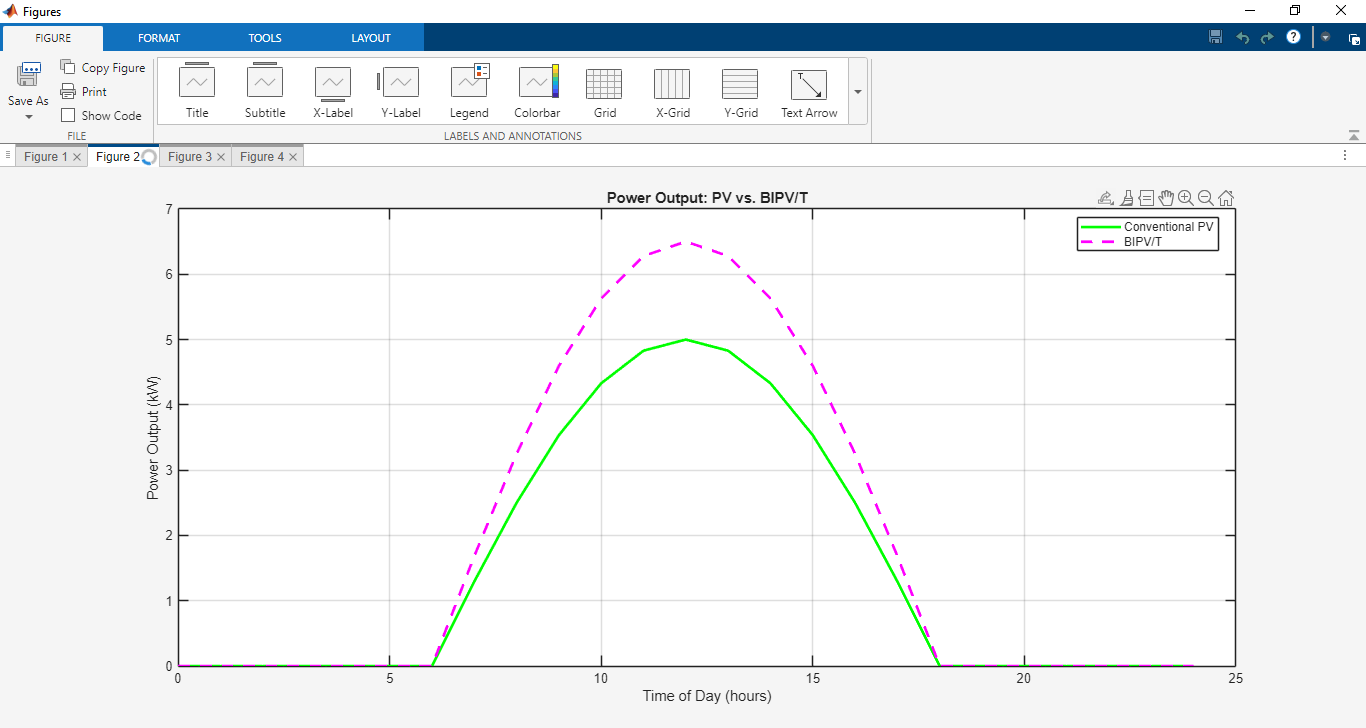
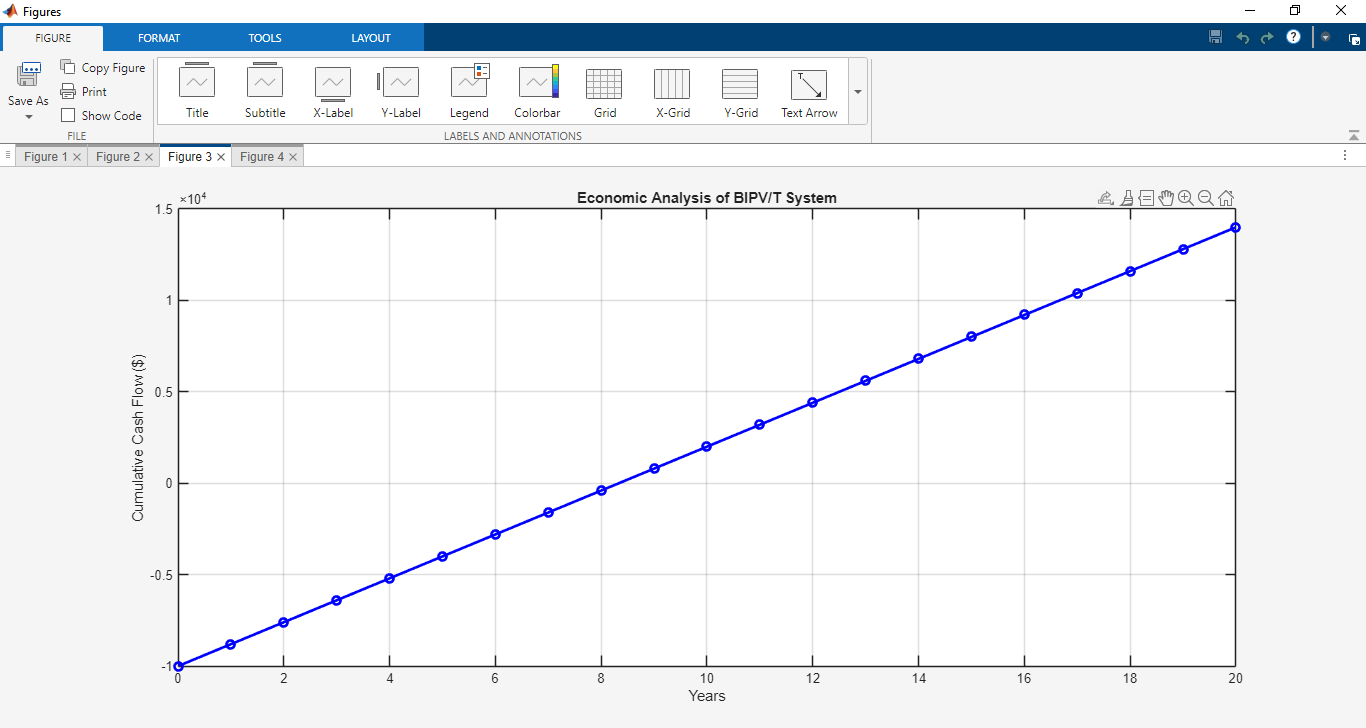
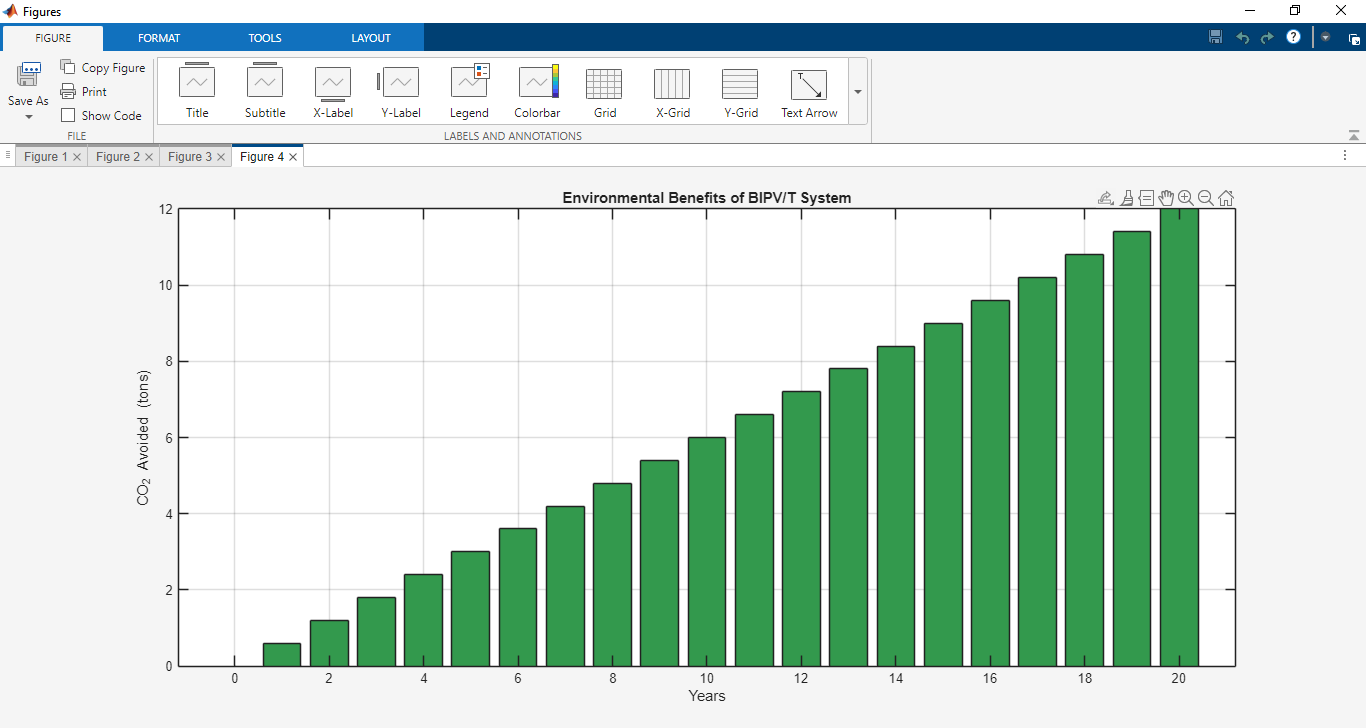
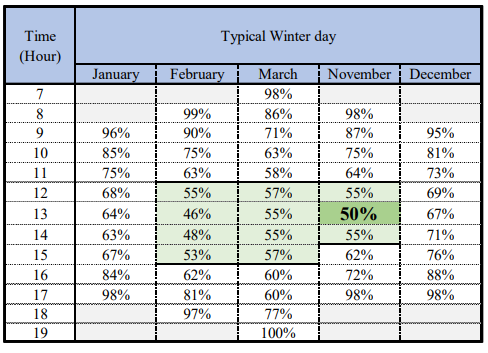
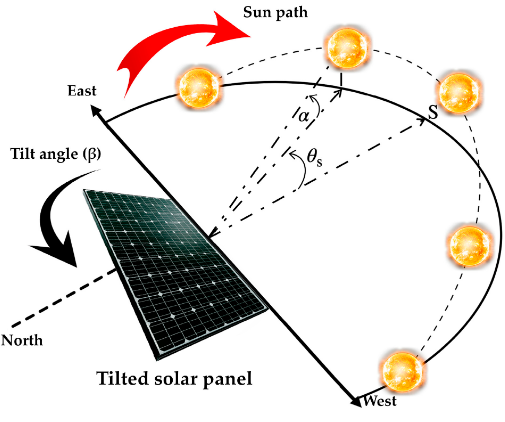


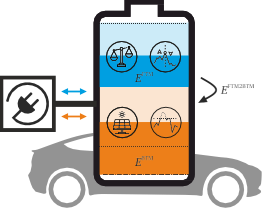
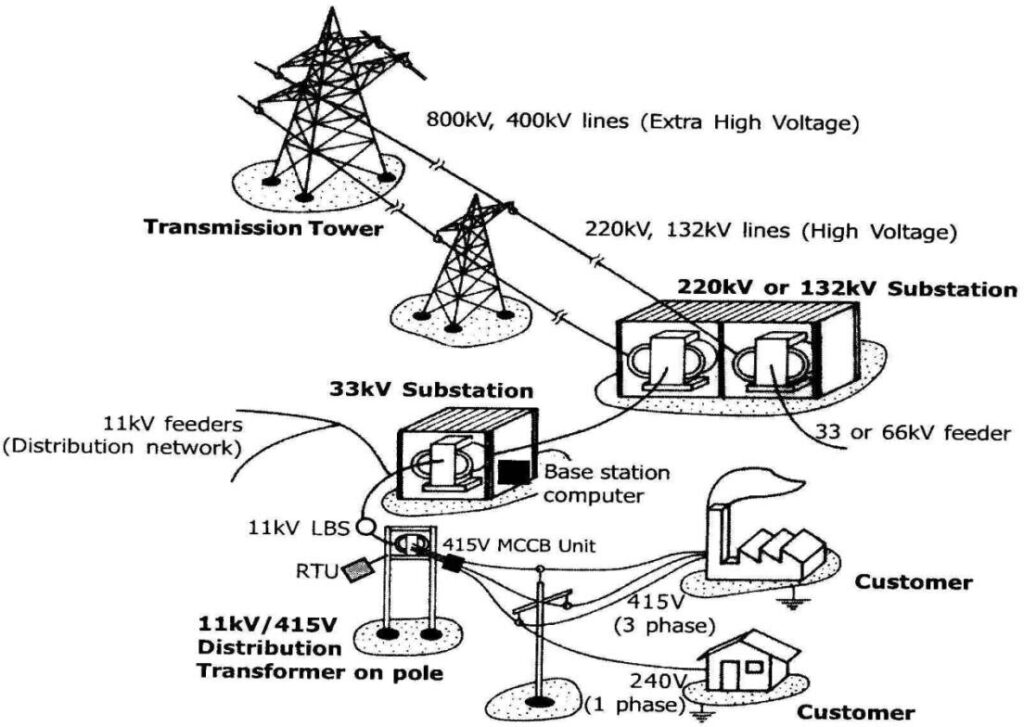


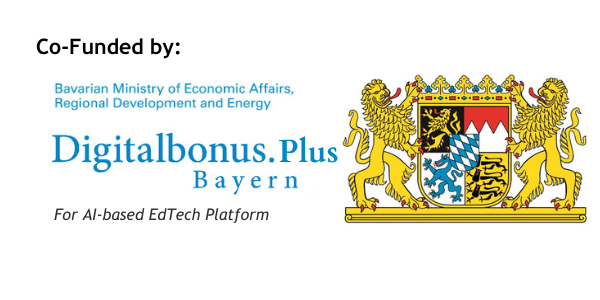



Responses